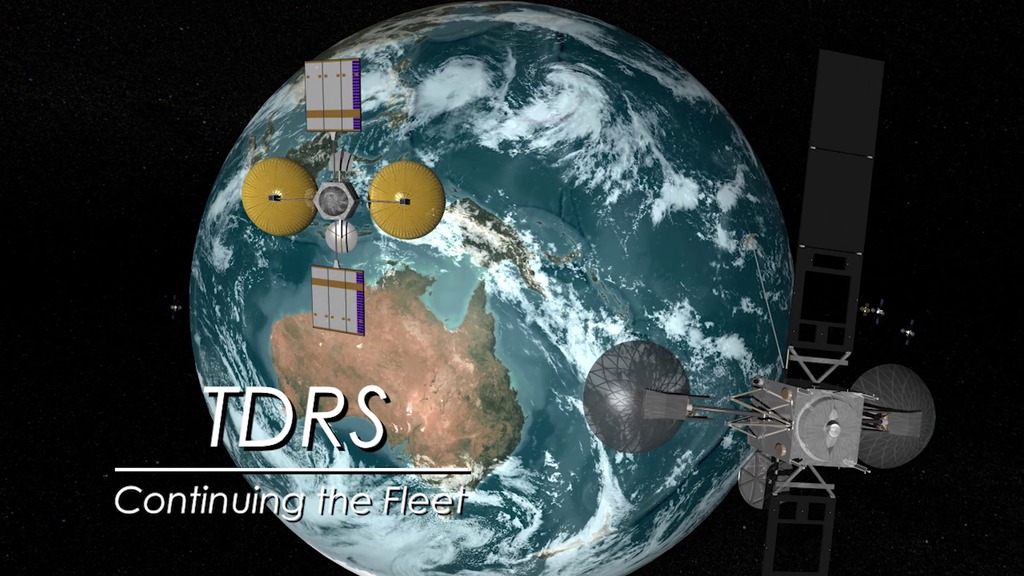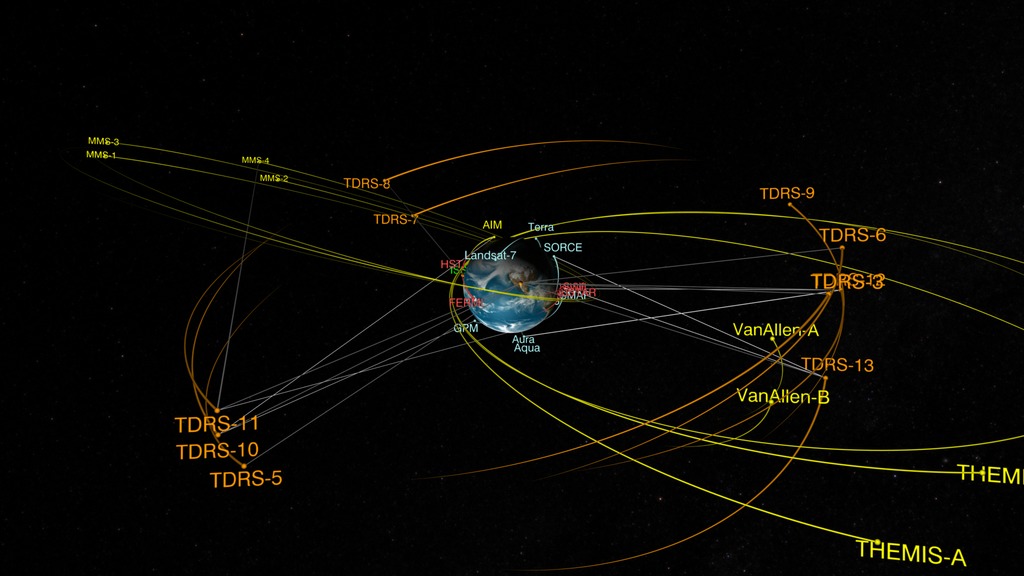Data Relay Network

Meet the satellites that relay data from space to the ground.
With two-thirds of our planet covered in water, satellites observing Earth in low orbit or in elliptical orbits aren't always in range of stations on the ground that can receive their data. That's where NASA's network of Tracking and Data Relay Satellites, or TDRS, comes in. These ten satellites circle Earth out in geosynchronous orbit, turning with Earth to remain in position over the same spot on the ground. From this position, one of these communications satellites is always within range of the science satellites - and the ground stations on Earth that can receive their data. Managed by NASA's Goddard Space Flight Center, TDRS satellites relay science data and spacecraft operating data back to Earth, as well as track the spacecraft's location. They also relay commands from engineers on the ground to the satellites. Watch the videos to learn more.
Learn about TDRS-M, the most recent member of the TDRS fleet, which launched into space in August 2017.
NASA's Badri Younes describes how TDRS revolutionized the flow of information from space to the ground.

Gray lines show the flow of information from NASA'a science satellites to TDRS satellites (orange) and to the ground.

TDRS satellites have two big receiving dishes to the sides and one transmitting antenna in the center.
For More Information
See NASA.gov
Credits
Please give credit for this item to:
NASA's Scientific Visualization Studio
-
Animators
- Kel Elkins (USRA)
- Chris Meaney (KBR Wyle Services, LLC)
- Walt Feimer (KBR Wyle Services, LLC)
-
Producer
- Stuart A. Snodgrass (KBR Wyle Services, LLC)
-
Writer
- Ellen T. Gray (ADNET Systems, Inc.)
Release date
This page was originally published on Monday, November 27, 2017.
This page was last updated on Wednesday, May 3, 2023 at 1:47 PM EDT.

